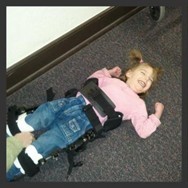
A fun Christmas season activity is watching children perform Christmas plays. When Maggie was five and Jack was three, they had the opportunity to be in a play depicting the First Christmas. All the actors were under eleven, and many were under five years old. Maggie has severe cerebral palsy, which posed challenges; fortunately for her, Cindie Walker, her best friend, was the director. Maggie needed to be placed in a stander to participate in an upright position, without her wheelchair. Cindy had spent a great deal of time with Maggie and wasn’t put off by what was required to work with her. In fact, the beauty of this director was that she wasn’t put off by working with any of the children, no matter how young. She had a vision that I loved. It wasn’t about the outcome, but about how everyone would feel when it was over.
I know you’ll get a kick out of how this play went, what it took to bring it about, the outcome of everyone’s efforts, and the blessing it was for those who performed and watched. I know you’ll love the photos. I also know that it will prompt you to reflect on how you interact with children when things get messy. Enjoy every delightful minute of my long-ago experience. Merry Christmas! As always, there will be a lesson at the end. : )
The First Practice
One of the angels wanted to look like a pirate. He was desperate to look like a pirate and was insistent! All the angels were taking off their halos because they itched. The angel who was supposed to say, “Follow the star”, felt it was more important to say, “Point to the star.” That was his plan come play night.
The Roman soldier kept pulling on his robe and saying, “I look silly.” Mary kept losing her headpiece.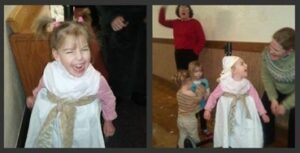 Maggie, my granddaughter with cerebral palsy, was supposed to wear a headpiece. That was not going to work at all. She was supposed to say, “We are afraid”. She said it the best she could, as her ability to speak was minimal, and she said it with a huge smile. She couldn’t find it in herself to look afraid. Many small shepherds were wandering about, trying to figure out where they were supposed to be.
Maggie, my granddaughter with cerebral palsy, was supposed to wear a headpiece. That was not going to work at all. She was supposed to say, “We are afraid”. She said it the best she could, as her ability to speak was minimal, and she said it with a huge smile. She couldn’t find it in herself to look afraid. Many small shepherds were wandering about, trying to figure out where they were supposed to be.
This is what it’s like working with children, especially young or special needs children. You can pull out your hair or feel joy at the experience you’re giving them.
 These children were in luck. Cindy Walker smiled through the chaos. She gently called the small children back into place. She helped with lines that would never be memorized. She replaced halos, headpieces, and robes, and kept smiling. She didn’t laugh out loud at the silly things the children said and did, even though she wanted to.
These children were in luck. Cindy Walker smiled through the chaos. She gently called the small children back into place. She helped with lines that would never be memorized. She replaced halos, headpieces, and robes, and kept smiling. She didn’t laugh out loud at the silly things the children said and did, even though she wanted to.
She told me it didn’t matter how the play went. No matter what, she wanted parents to smile, children to feel good, and hearts to be touched. For her, perfection wasn’t what mattered. Even reasonably well run wasn’t at the top of her list. She wasn’t worried about what others would think about the result. She wanted every child to have a wonderful time, to feel proud and happy about their efforts, and for the spirit of the season to be abundant and warm.
The Second Practice/Dress Rehearsal
None of the angels, all 3 and under, would wear their costumes. This did not bode well! Joseph and Mary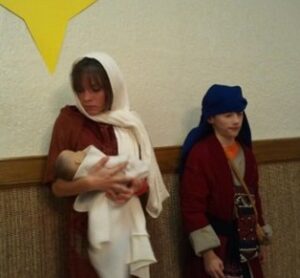 weren’t sure they liked their parts, especially saying, “I’m going to have a baby!” The soldier still felt silly. Headpieces were still falling off, belts were missing, halos still itched, no one remembered where they were supposed to stand, many parts were not memorized, and the little shepherd still smiled when saying, “We are afraid.”
weren’t sure they liked their parts, especially saying, “I’m going to have a baby!” The soldier still felt silly. Headpieces were still falling off, belts were missing, halos still itched, no one remembered where they were supposed to stand, many parts were not memorized, and the little shepherd still smiled when saying, “We are afraid.”
Cindy, bless her heart, was still smiling. She replaced headpieces, reminded children of their lines, and gently called small angels and shepherds into place. Her concern for the children and how they felt was still her top priority. She reminded herself and other adults that this play was about having an experience, learning to do something new, feeling good, and having fun. It wasn’t about perfection.
The Performance
Behind the scenes, chaos reigned; there was noise, lots of it. There were many moms and even more children moving around. Cindy was running madly from one crisis to another, hoping everything would fall reasonably into place.
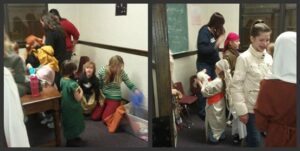
BEGIN!!!
All the angels wore their costumes. WOW!! All the headpieces stayed on, except for our happy little shepherd, who still smiled broadly as she said, “We are afraid!” Joseph and Mary were still not thrilled.
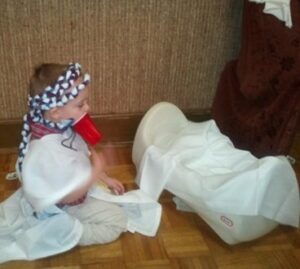 The little angel who wanted to say “Point to the star” wouldn’t leave his dad’s side and come on stage until all the other angels left the stage, and the shepherds were on their way in. Then he went and sat by the baby Jesus and made happy boy sounds with his plastic cup! (This was my grandson, Jack, age 3.) As the shepherds, wise men, and angels gathered around the baby Jesus, it was a mob, juggling each other for a space, mostly with their backs to the audience.
The little angel who wanted to say “Point to the star” wouldn’t leave his dad’s side and come on stage until all the other angels left the stage, and the shepherds were on their way in. Then he went and sat by the baby Jesus and made happy boy sounds with his plastic cup! (This was my grandson, Jack, age 3.) As the shepherds, wise men, and angels gathered around the baby Jesus, it was a mob, juggling each other for a space, mostly with their backs to the audience.
The audience sang loudly as each carol was introduced. Parents smiled, children felt good, and hearts were touched. Eyes were wet. The play was reasonably well run. Cindie was happy, despite being tired. What mattered had gone perfectly. Every child had a wonderful time. They each experienced something new. They felt proud and happy. The spirit of the season was abundant. Ah, success!
When we work with children, whether in a play, doing a craft, or baking, etc., we need to be prepared for childlike behavior. The more open we are to letting kids be kids and working gently and joyfully with them, the better the outcome will be. We will walk away happy and fulfilled, rather than drained. We won’t mind the mess, the silliness, or what doesn’t go as planned. That was the brilliance of Cindie’s vision. This is what being present with kids looks like.
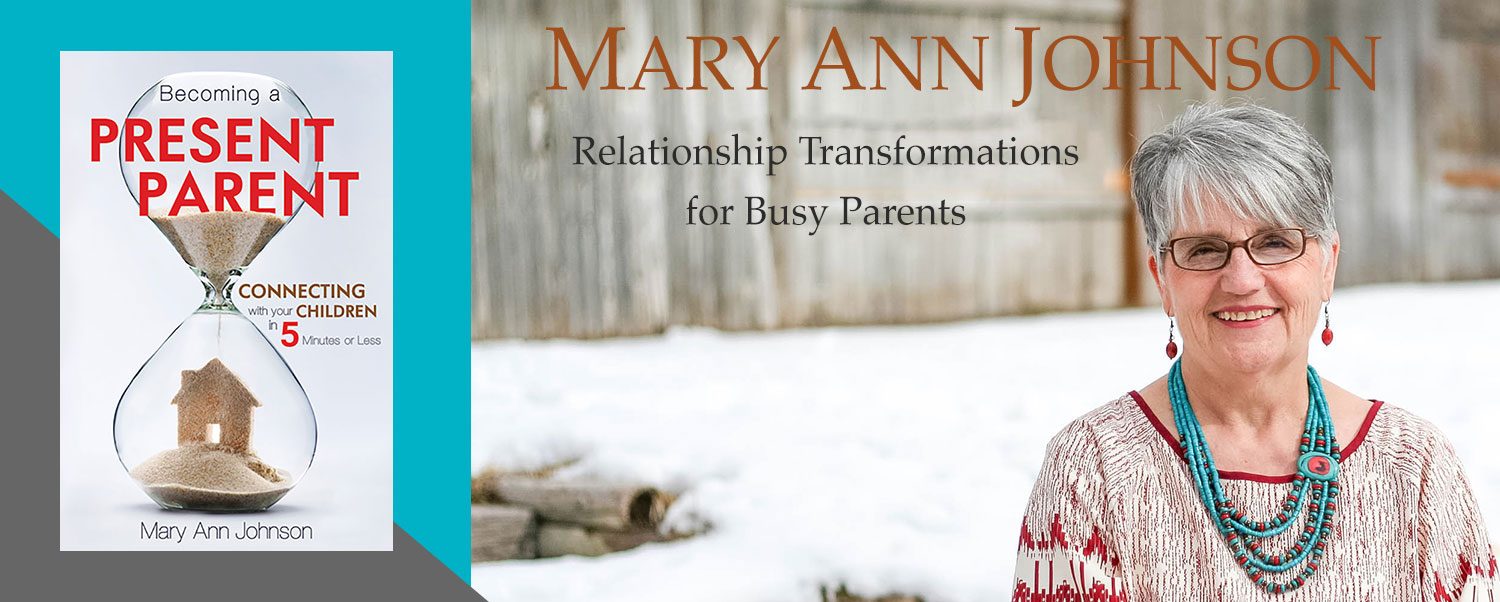

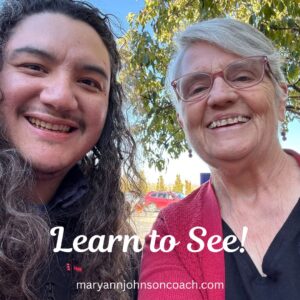 This week, I had an experience that brought to mind the importance of letting our kids know, daily, that we see them and that they matter. It brought back many memories of families I have worked with, parents I have mentored, and the huge impact I’ve seen when
This week, I had an experience that brought to mind the importance of letting our kids know, daily, that we see them and that they matter. It brought back many memories of families I have worked with, parents I have mentored, and the huge impact I’ve seen when 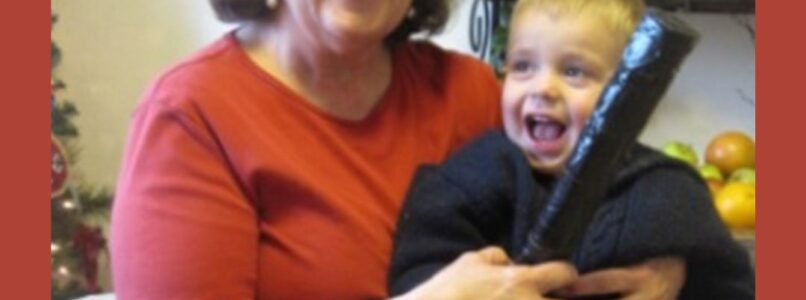
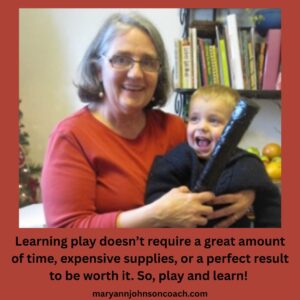
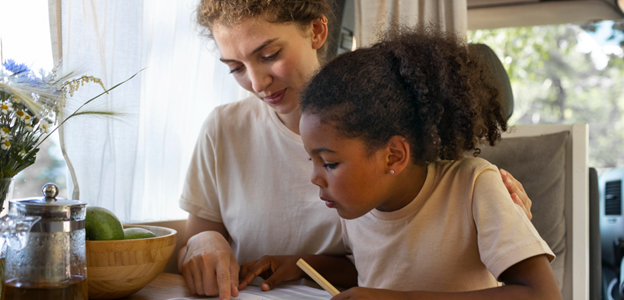
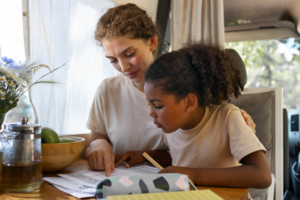
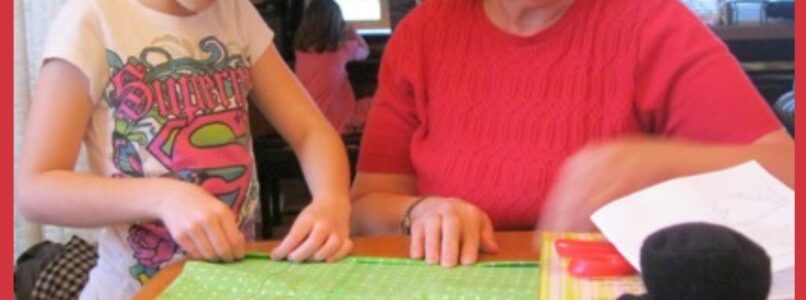
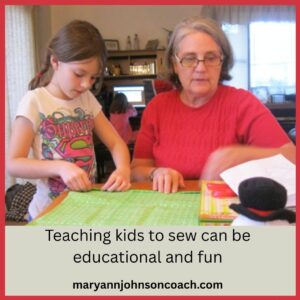 In 2012, the week after Christmas, Don and I traveled to Colorado to visit our grandkids. We loved and missed our daughter and her husband, but we went to see the grands! I’m always grateful for the time we took, in those early days, to spend time with them. Ashley, the grand in this story, is now in her mid-twenties and a wonderful hairdresser. They grow so fast, and you can’t reclaim their childhood. Hence, the perilous drive in the winter. : )
In 2012, the week after Christmas, Don and I traveled to Colorado to visit our grandkids. We loved and missed our daughter and her husband, but we went to see the grands! I’m always grateful for the time we took, in those early days, to spend time with them. Ashley, the grand in this story, is now in her mid-twenties and a wonderful hairdresser. They grow so fast, and you can’t reclaim their childhood. Hence, the perilous drive in the winter. : )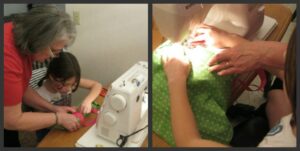 them their job is to push the material forward into the feed dog, and keep a straight line. Then I worry about the pedal. That way, they learn to do one thing before trying to do two.
them their job is to push the material forward into the feed dog, and keep a straight line. Then I worry about the pedal. That way, they learn to do one thing before trying to do two.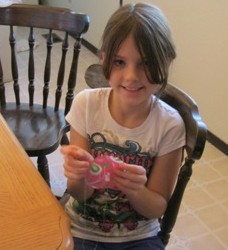
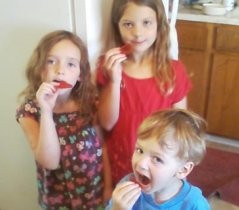
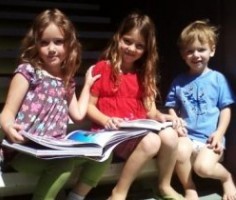 Later, I found Lizzy and Ashley sitting at the bottom of the stairs, looking at the books they brought home from the library. They had originally gone out to ride their scooters, but the books were so compelling that they never made it to the driveway. They were comparing the crystals in each other’s books, chatting away about the shapes, sizes, and colors.
Later, I found Lizzy and Ashley sitting at the bottom of the stairs, looking at the books they brought home from the library. They had originally gone out to ride their scooters, but the books were so compelling that they never made it to the driveway. They were comparing the crystals in each other’s books, chatting away about the shapes, sizes, and colors.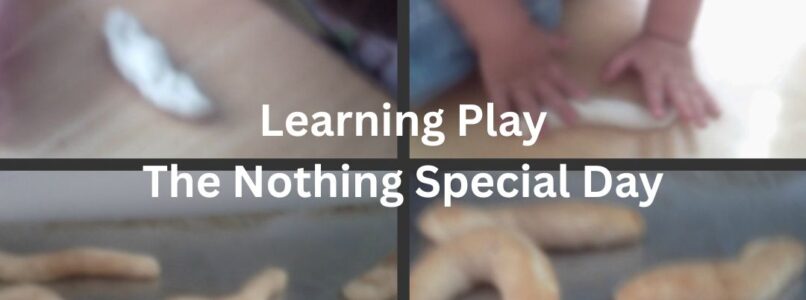
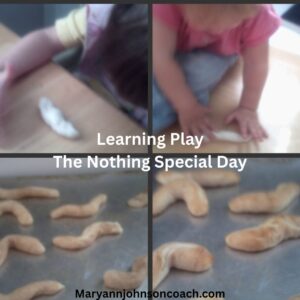 Back in the day, when my grands were small, I did many learning activities with them. I enjoyed it and so did they. As I mentioned earlier this spring, I’m sharing some of those past learning activities with you because you can have as much enjoyment and fun with your children or grands as I did. Sometimes all we need is an idea, and then we can run with it. So here goes!
Back in the day, when my grands were small, I did many learning activities with them. I enjoyed it and so did they. As I mentioned earlier this spring, I’m sharing some of those past learning activities with you because you can have as much enjoyment and fun with your children or grands as I did. Sometimes all we need is an idea, and then we can run with it. So here goes!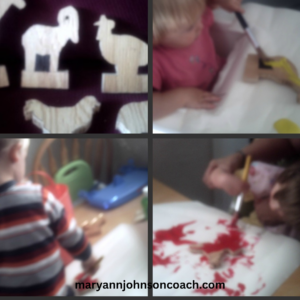 paper. When they were done and wanted another animal and a different color, we traded papers. Grandpa was very satisfied with the result. This particular range wouldn’t have his usual perfection, but it had memories and was fun to use.
paper. When they were done and wanted another animal and a different color, we traded papers. Grandpa was very satisfied with the result. This particular range wouldn’t have his usual perfection, but it had memories and was fun to use.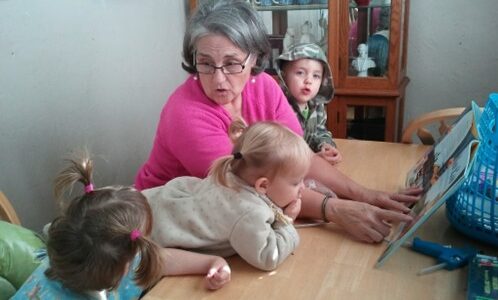
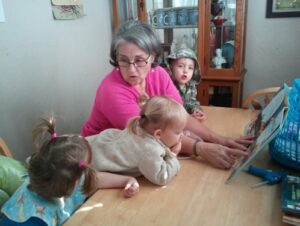 One day in 2011, I found the most amazing book at the library!!! I happened across it accidentally. It was about Leonardo Da Vinci and the amazing visions he had. But that wasn’t all. The book showed how, in time, all his inventive ideas were created by other people and who those people were. Oh my gosh, I wanted to share this with my grands.
One day in 2011, I found the most amazing book at the library!!! I happened across it accidentally. It was about Leonardo Da Vinci and the amazing visions he had. But that wasn’t all. The book showed how, in time, all his inventive ideas were created by other people and who those people were. Oh my gosh, I wanted to share this with my grands.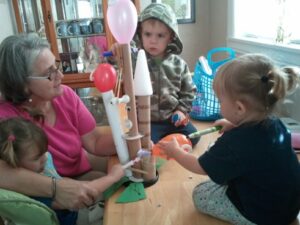 Our Super-duper Rocket-propelled Robot
Our Super-duper Rocket-propelled Robot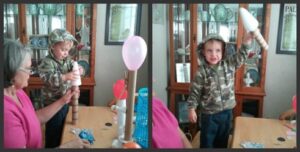
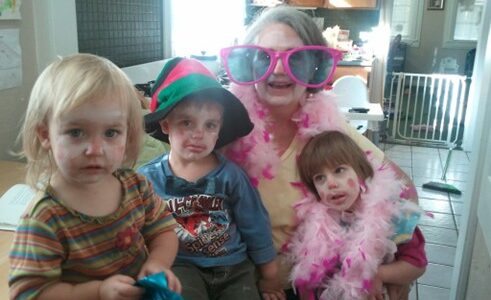

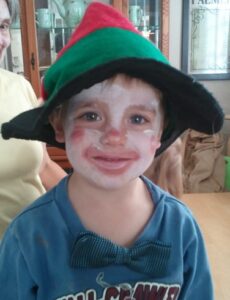 white face paint and lipstick. The white face paint was Halloween makeup I bought many years ago. It worked well enough. For red, we used what grandma had, lipstick. As I say, keep it simple. Then we tried on all the glasses, boas, ties, and other costume items. Jack fell in love with a hat and a bow tie. He asked me if he could have them. I said he could surely borrow them. “I don’t like borrow” he said, “I want to have them!” LOL
white face paint and lipstick. The white face paint was Halloween makeup I bought many years ago. It worked well enough. For red, we used what grandma had, lipstick. As I say, keep it simple. Then we tried on all the glasses, boas, ties, and other costume items. Jack fell in love with a hat and a bow tie. He asked me if he could have them. I said he could surely borrow them. “I don’t like borrow” he said, “I want to have them!” LOL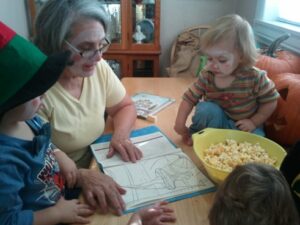 sometimes we aren’t! We managed with what we had, and I made a circus book. I found a terrific site of circus pictures, printed them off, and put them into a binder. (Jack, Mary, and Maggie used it until it fell apart.) It also made a great circus coloring book.
sometimes we aren’t! We managed with what we had, and I made a circus book. I found a terrific site of circus pictures, printed them off, and put them into a binder. (Jack, Mary, and Maggie used it until it fell apart.) It also made a great circus coloring book.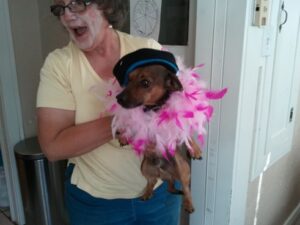

 When I first began writing and publishing articles, it was in 2010. My grands, the ones I still live with, were all under five. As their grandma, I wanted to find ways to play and connect. I’m not a board game person! Tea parties and dress up are not on my list of fun things! The truth is, I like learning. I always have. I thought a lot about how I could ‘play’ with my grands and make it work for all of us. What I came up with was learning for fun. Every Tuesday, for several years, we would gather and play/learn. They looked forward to it and occasionally would tell me what they wanted to know or ask about at our next Tuesday session. It was a hit and was called Grandma School. : )
When I first began writing and publishing articles, it was in 2010. My grands, the ones I still live with, were all under five. As their grandma, I wanted to find ways to play and connect. I’m not a board game person! Tea parties and dress up are not on my list of fun things! The truth is, I like learning. I always have. I thought a lot about how I could ‘play’ with my grands and make it work for all of us. What I came up with was learning for fun. Every Tuesday, for several years, we would gather and play/learn. They looked forward to it and occasionally would tell me what they wanted to know or ask about at our next Tuesday session. It was a hit and was called Grandma School. : ) the pictures and I told them fun cow facts, such as, “Did you know a cow has four stomachs. You only have one, but a cow has four!!” That type of comment is usually followed by a question such as “Why Grandma?” Then we get to learn a bit more. Jack’s favorite cow fact was: “Daddy cows are called bulls and they go Moo really, really loud.” I did such a great daddy cow impersonation that it sent Jack into gales of laughter.
the pictures and I told them fun cow facts, such as, “Did you know a cow has four stomachs. You only have one, but a cow has four!!” That type of comment is usually followed by a question such as “Why Grandma?” Then we get to learn a bit more. Jack’s favorite cow fact was: “Daddy cows are called bulls and they go Moo really, really loud.” I did such a great daddy cow impersonation that it sent Jack into gales of laughter. After the books, we did a cow activity. I had created a picture sheet on my computer that showed cool foods that are made from cow’s milk: cheese, cream, ice cream, milk for cereal, cottage cheese, sour cream, etc. I also had the real item on the table, if we had it. We looked at the pictures, talked about each item, and then tasted it. Of course, we all liked the cookie dough best. (It has milk in it!)
After the books, we did a cow activity. I had created a picture sheet on my computer that showed cool foods that are made from cow’s milk: cheese, cream, ice cream, milk for cereal, cottage cheese, sour cream, etc. I also had the real item on the table, if we had it. We looked at the pictures, talked about each item, and then tasted it. Of course, we all liked the cookie dough best. (It has milk in it!) way, but then switched to using two hands and having me hold and turn the paper. Special scissors with 4 finger holes allowed me to help Maggie cut her own cow spots. She was thrilled. (Remember, Maggie, who is now eighteen, has severe cerebral palsy, so doing anything with help thrilled her and still does.)
way, but then switched to using two hands and having me hold and turn the paper. Special scissors with 4 finger holes allowed me to help Maggie cut her own cow spots. She was thrilled. (Remember, Maggie, who is now eighteen, has severe cerebral palsy, so doing anything with help thrilled her and still does.) We ended the day by making mac and cheese. Cooking was a favorite activity, so everyone helped. The kids liked tasting the powdered cheese. We had our mac and cheese for lunch, and it was delicious. Maggie, Jack, and Mary decided that having cows in our world is a very good thing.
We ended the day by making mac and cheese. Cooking was a favorite activity, so everyone helped. The kids liked tasting the powdered cheese. We had our mac and cheese for lunch, and it was delicious. Maggie, Jack, and Mary decided that having cows in our world is a very good thing.